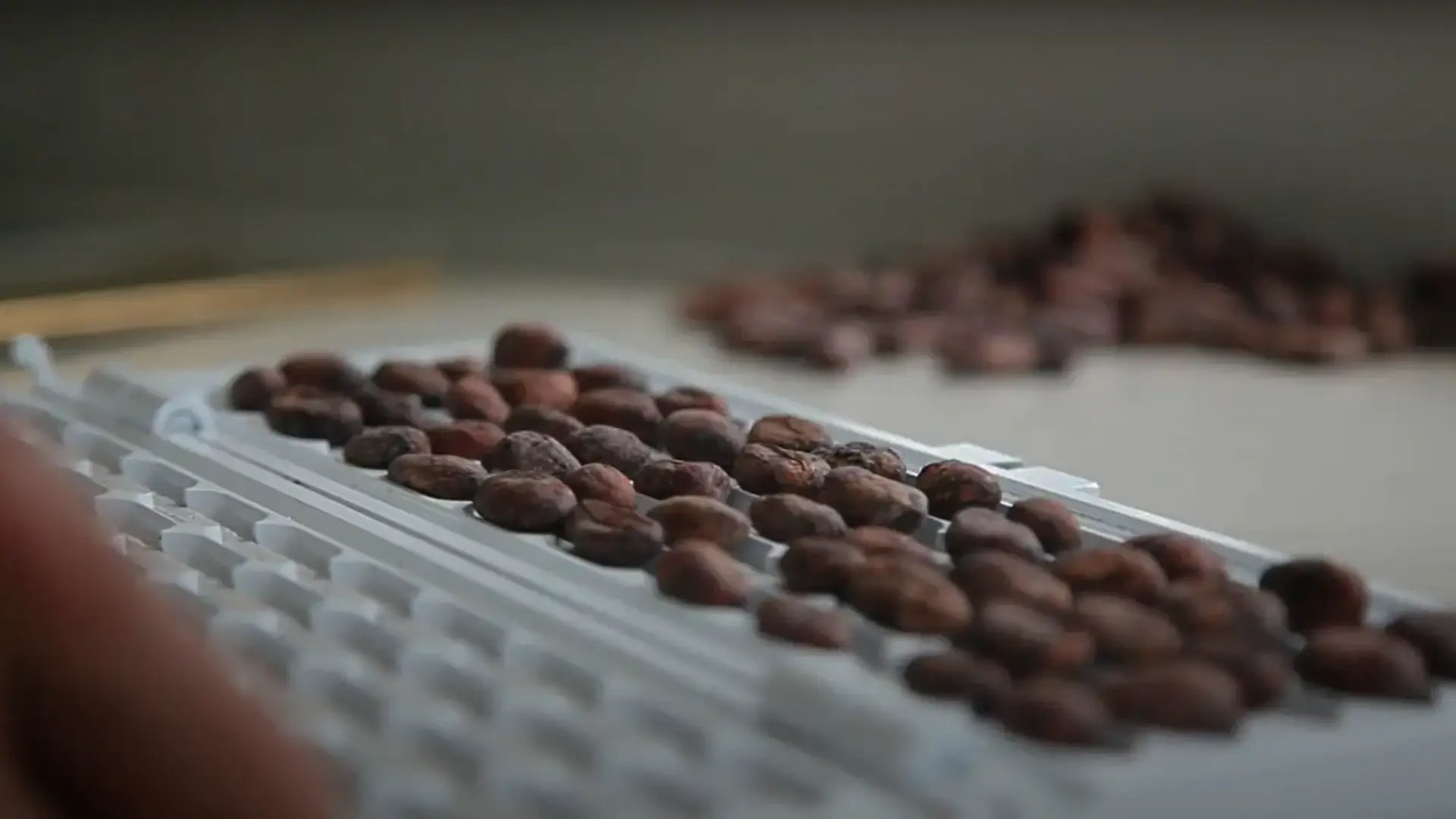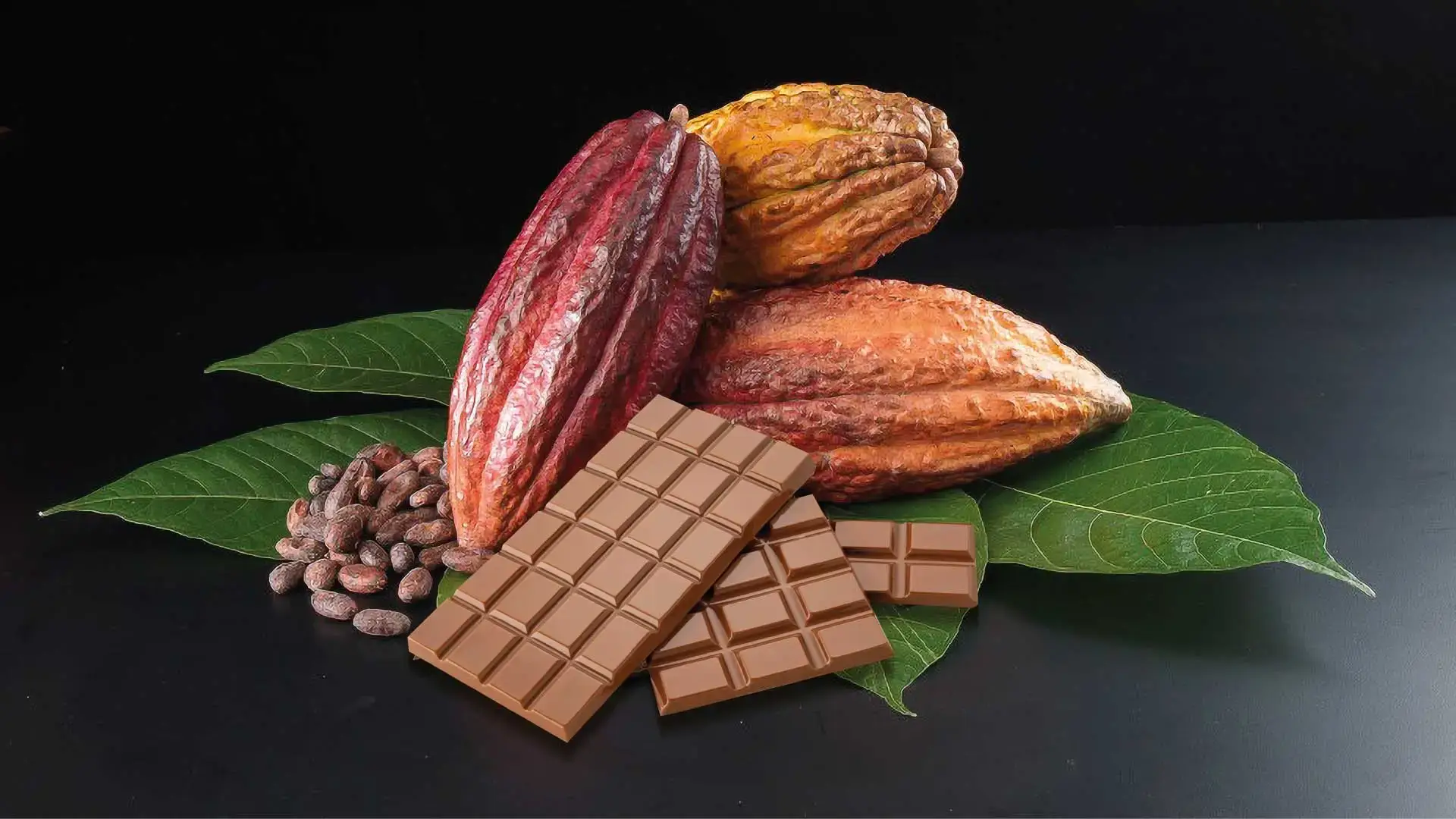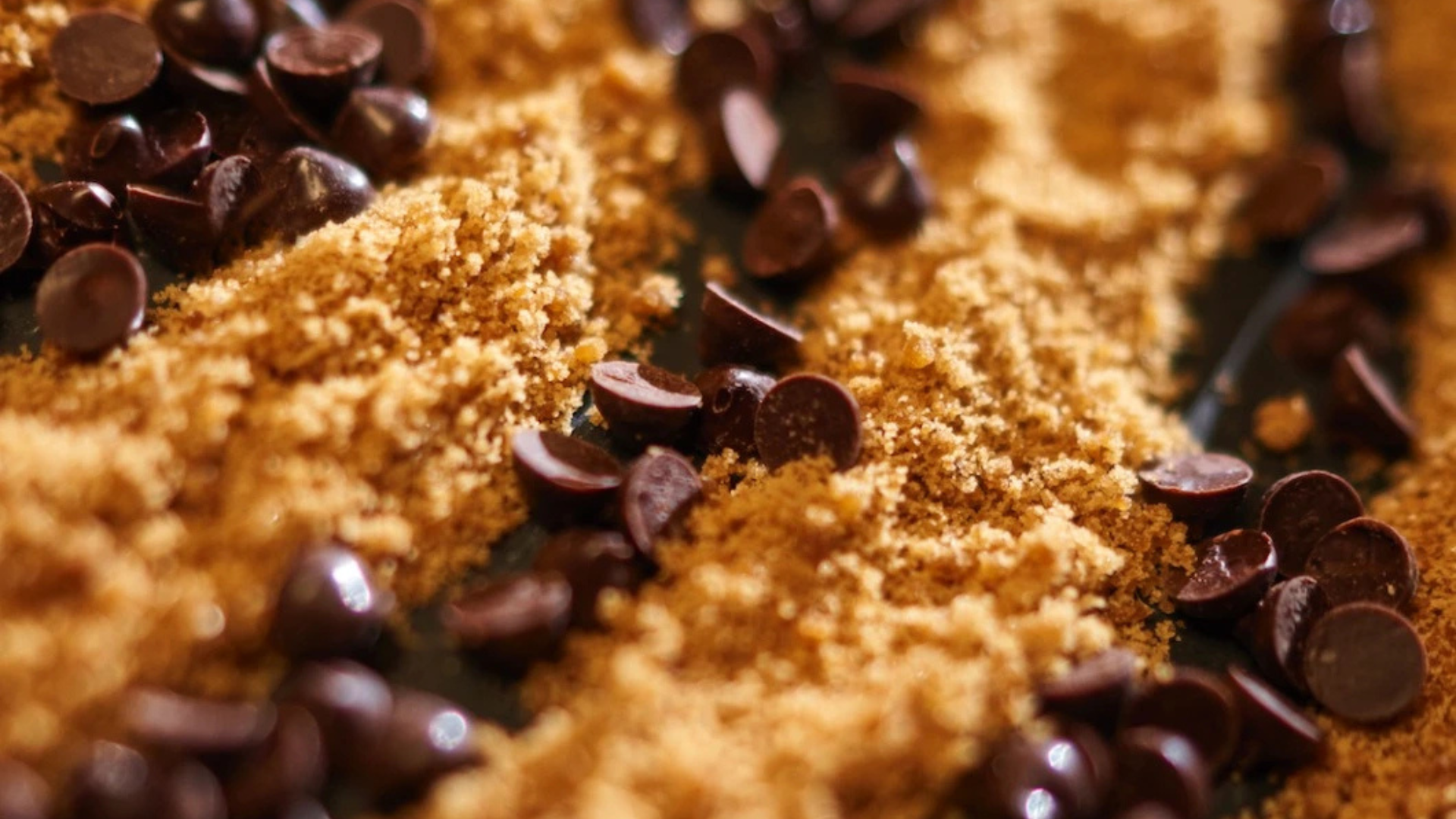Over the last few years, protein-enriched chocolate has become a highly demanded product. Health-conscious consumers are increasingly seeking chocolate that offers more than just indulgence—it should deliver nutritional benefits without compromising on taste. To meet these expectations, brands are turning to protein, particularly plant-based options.
⭐ Key Takeaway: With protein fortification becoming a key selling point, understanding how it impacts chocolate’s flavour, texture, and overall consumer experience is crucial. This blog will delve into the specific types of protein used in chocolate manufacturing, their influence on the sensorial profile, and how to balance health benefits with indulgent qualities.
Why Protein Is the New Game-Changer for Chocolate Brands
The demand for protein-enriched chocolate is not just about providing a healthier option; it’s about enhancing the overall experience. For R&D teams, this trend means more than just adding protein to a chocolate formula. It requires re-engineering the chocolate’s structure, mouthfeel, and flavour to maintain that signature indulgent experience.
- 62% of North American consumers actively seek lower-sugar and higher-protein chocolate options, driven by the growing functional food trend (Innova Market Insights, 2024).
- Gen Z and Millennials are leading the charge, with 35% of younger consumers prioritising protein-enriched products (Innova Market Insights, 2025).
This blog will give brand portfolio managers and R&D professionals actionable insights on successfully integrating protein into your chocolate formulations while maintaining the indulgent taste that chocolate lovers crave.
Table of Contents:
- Whey vs. Plant-Based Protein: What Difference Do They Make?
- How Protein Affects the Flavour, Texture, and Mouthfeel of Chocolate
- The Role of Protein in Rheology and Viscosity in Chocolate
- Shelf Life Stability: How Protein Impacts Storage and Stability
- Practical Tips for R&D Teams and Brand Portfolio Managers
💡 Are you looking to innovate with protein-enriched chocolate? Discover our functional chocolate portfolio and elevate your next product launch to success!
Whey or Plant-Based Protein: What Difference Do They Make for Your Chocolate?
Plant-based proteins such as pea protein tend to impart earthy or green flavours, while whey protein can bring a creamy taste that complements dairy-based chocolates (Afoakwa, 2010).
Whey Protein:
Known for its smooth texture, creamy mouthfeel, and neutral flavour profile, whey protein is ideal for milk chocolate formulations. Its emulsifying properties improve the overall viscosity and ensure smoother melting in chocolate. It integrates well with dairy-based systems, making it a popular choice for indulgent, creamy formulations.
Whey protein isolate (WPI) typically integrates better into dairy chocolates due to its emulsifying properties, smooth mouthfeel, and neutral flavour profile. This makes it ideal for those seeking functional, indulgent milk chocolate options.
Plant-Based Proteins:
Proteins like those from peas, rice, and almonds offer health benefits and are central to meeting the demand for vegan and plant-based products. However, they introduce distinct flavours, such as earthiness or bitterness, and can lead to dryness or astringency unless handled carefully. They tend to create a heavier mouthfeel and may require balancing with fat and flavour masking strategies. Plant-based proteins work great in plant-based chocolates.
💡 Actionable Tips: Manage off-flavours: To mitigate the earthy or bitter notes in plant-based proteins, consider adjusting the sweetener profile or adding flavour enhancers like toasted almonds or hazelnuts.
How Protein Affects the Flavour, Texture, and Mouthfeel of Chocolate
Protein is a functional ingredient beyond just nutritional benefits—it significantly impacts chocolate's flavour and overall sensory experience. The challenge for R&D teams and brand owners lies in balancing the inherent flavours of protein with the rich, indulgent taste consumers expect from chocolate.
It's crucial to understand the protein’s flavour profile and how it interacts with cocoa solids, fat, and sweeteners. The goal is to create a smooth, indulgent chocolate that promises health benefits while retaining the rich, complex flavours consumers expect.

Flavour:
Proteins impact the flavour profile of chocolate in both positive and negative ways. While whey protein can complement the creamy nature of milk chocolate without overpowering the cocoa taste, plant-based proteins often add earthy notes that go well with higher cocoa content. Nut-based inclusions can enhance the chocolate experience.
Texture & Mouthfeel:
Mouthfeel determines the product's smoothness, creaminess, and satisfaction as it melts in the mouth. Protein-enriched chocolate can significantly alter the texture, especially if the protein inclusion is high. The challenge lies in ensuring that functional ingredients like proteins do not compromise the mouthfeel or cause undesirable textural effects. The inclusion of proteins, primarily plant-based varieties, can lead to graininess or a dry mouthfeel, which is easily overcome by ensuring that emulsification and particle size are adequately managed. On the other hand, whey protein improves smoothness and can enhance viscosity. The viscosity must be carefully controlled for higher protein chocolates, or the chocolate could become too thick, requiring adjustments in fat ratios.
Protein-based chocolates with higher protein inclusions (e.g., 10-20% protein) require flavour masking strategies, such as blending proteins, using flavour boosters like cocoa intensity, or pairing with nut-based inclusions (Beckett, 2008).
Key Factors Affecting Flavour and Texture in Protein-Enriched Chocolate:
1. Protein Dispersibility:
Use finely milled protein isolates and emulsifiers (like sunflower lecithin) to enhance flowability and maintain smooth texture for plant-based formulations.
2. Adjust fat content:
When adding plant proteins like pea or rice to maintain a creamy mouthfeel. Balancing the fat-to-protein ratio helps avoid dryness and graininess.
Utilise fat phase management to fine-tune the viscosity and melt characteristics of protein-enriched chocolates. If graininess or excessive viscosity becomes a problem, experiment with lowering the protein inclusion percentage.
3. Monitor water activity (Aw):
Carefully in high-protein formulations to ensure proper shelf life. Control moisture levels to avoid microbial growth and reduce the risk of fat bloom.
4. Control processing time and temperature:
Ensure proper conching and tempering times to preserve texture and mouthfeel in high-protein chocolates. This will help manage protein-fat interactions and avoid compromising the chocolate’s quality.
A Case Study in Flavour Masking: How Luker Chocolate Balanced Plant Proteins and Cocoa in Protein-Enriched Chocolate showcases how Luker uses a proprietary blend of cocoa and proteins to optimise flavour while maintaining a premium mouthfeel. Highlight the R&D process, techniques, and key challenges that have been overcome.
💡 Need help fine-tuning the texture of your protein-enriched chocolate? Our New Product Development team can help you create chocolates that strike a balance between nutrition and indulgence.
The Role of Protein in Rheology and Viscosity in Chocolate
Understanding Protein’s Impact on Chocolate’s Flow and Consistency
Rheology is the study of the flow and deformation of matter. In the context of chocolate manufacturing, it’s critical to determine how the chocolate behaves during processing and once it’s on the shelf. Viscosity —the thickness or resistance to flow— is a key parameter influenced by the protein content of chocolate. Managing rheology is essential to ensure proper moulding, coating, and enrobing and to achieve the desired mouthfeel.

Chocolate with Protein: How It Affects Viscosity and Flow Properties:
- Temperature sensitivity: Protein-enriched chocolates exhibit viscosity changes in response to temperature fluctuations. Managing the tempering profile and processing temperature is vital to avoid undesirable changes in the chocolate’s rheological properties.
- Fat-to-protein ratio: High protein inclusion can require adjusting the fat content to balance the chocolate’s flow behaviour. This adjustment ensures the chocolate’s workability and processing efficiency.
- Proteins such as whey and casein can increase viscosity in chocolate formulations, which is beneficial for specific processes, such as coating or enrobing, but can be problematic when aiming for fluidity during moulding or piping (Beckett, 2008). Whey protein has better flowability than plant proteins, which can introduce increased viscosity or thickening if not carefully controlled (Afoakwa, 2010).
- High-protein chocolates, particularly those containing plant proteins, often require adjustments in tempering to ensure that they flow properly and do not become too thick (Afoakwa, 2010).
5 Actionable Tips:
- Monitor viscosity regularly during production. Utilise texture analysis tools to monitor viscosity changes as protein levels increase. Aim for the ideal viscosity curve for each production stage (e.g., coating vs. moulding).
- When working with high-protein content, ensure that temperatures are controlled throughout processing. Avoid excessive heat, which can alter the fat matrix and increase viscosity.
- Blend proteins to fine-tune viscosity. For example, using whey protein isolate can help manage viscosity in chocolate formulations that require high fluidity. In contrast, pea protein might be better suited for applications where higher viscosity is desired (e.g., in coatings).
- Adjust the fat-to-protein ratio to maintain the ideal flowability for chocolate, particularly in high-protein formulations. A lower fat ratio might require additional emulsifiers or fat replacements.
- Use emulsifiers, such as sunflower lecithin, in plant protein formulations to improve flow and reduce viscosity issues during processing.
What You Need to Know:
Viscosity is a crucial parameter that influences the workability and performance of chocolate during production. In protein-enriched chocolates, the rheological properties can be altered significantly, especially when high amounts of plant-based proteins are used. Managing these changes effectively requires adjusting protein content, fat levels, and processing temperatures.
Balancing flowability and viscosity is key to ensuring that the final product has the right consistency in terms of processing and sensory appeal.
💡 Explore our turnkey manufacturing services to refine your formulations.
Shelf Life in Protein-Enriched Chocolates — Stability, Texture, and Taste Over Time
One key challenge when introducing protein-enriched chocolates is ensuring the product maintains its integrity throughout its shelf life. Protein ingredients can influence various aspects of chocolate’s stability, including texture, flavour, and appearance. For R&D teams, it is crucial to understand how different proteins interact with the chocolate matrix over time and how this affects consumer experience.

How to Ensure Long-Term Stability in Chocolate with Added Protein:
- Proteins and lipids: The interaction between proteins (both dairy-based and plant-based) and cocoa lipids can affect crystallisation, leading to an increased risk of fat bloom (Afoakwa, 2010). This is particularly true for high-protein formulations, where the fat phase may become unstable if not appropriately managed.
- Water activity: The presence of proteins, especially in plant-based formulations, can alter the product's water activity (Aw). This can increase the risk of microbial growth and fat migration, both of which can compromise the product’s quality over time.
- Shelf-life testing: Incorporating functional ingredients, such as proteins, requires more rigorous shelf-life testing. Monitoring how proteins interact with cocoa butter and how these interactions affect flavour stability and texture is essential to ensure the chocolate meets quality standards throughout its life.
- Flavour stability: Proteins, particularly plant-based proteins, can cause the flavour profile to shift over time, introducing bitter or earthy notes. This can be mitigated using flavour masking techniques, such as adjusting sweetener blends or adding aromatic inclusions like vanilla or nutmeg (Beckett, 2008).
- Packaging considerations: Packaging is crucialin preserving the sensory profile and freshness of protein-enriched chocolates. Ensuring the packaging is optimised to reduce moisture, oxygen, and light exposure can help maintain the product's integrity (Afoakwa, 2010).
⭐ Customer behaviour: 33% of global consumers prioritise health and well-being in their spending. Products with protein have seen the most growth, with a 6% increase over the last 4 years. This shift towards health-conscious eating presents a significant opportunity for protein-enriched chocolates. (Innova Market Insight, 2025).
Actionable Tips:
- Monitor water activity for packaging adaptations: Track Aw to ensure proper moisture control in high-protein chocolates. Packaging adaptations may be necessary to protect against microbial growth and fat bloom.
- Conduct accelerated shelf-life testing: Run tests to evaluate texture, viscosity, and flavour stability in high-protein chocolates. Based on the findings, adjustments should be made to ensure product quality is maintained.
- Consider fat binding: Protein interactions with cocoa butter can lead to instability. Adjust the fat matrix by selecting the right balance of emulsifiers and fat content to avoid fat bloom or textural changes over time.
- Mask undesirable flavours: Use flavour stabilisers or incorporate natural flavours to offset any bitterness or earthiness from plant-based proteins. Also, adjust sweetener profiles to maintain a balanced flavour.
- Evaluate packaging options: Select packaging that minimises exposure to oxygen and moisture to extend shelf life and preserve sensory integrity. Vacuum-sealing or foil-lined wrappers can be especially useful in maintaining product quality.

What You Need to Know:
Shelf life in protein-enriched chocolate is a balancing act. While proteins offer functional benefits, they also present unique challenges to stability, particularly in high-protein formulations. R&D teams must integrate comprehensive testing to monitor texture changes, flavour shifts, and microbial risks over time. Carefully selecting the right fat-binding agents and flavour profiles, combined with appropriate packaging, will help ensure the final product maintains its high-quality experience throughout its shelf life.
💡 Our R&D team is here to help. Contact us to discuss how we can assist with shelf-life testing, sensory validation, and fat-binding strategies for your brand’s next product launch!
Key Considerations for Brands and R&D Teams in Protein-Enriched Chocolate Formulations
The Art of Balancing Functionality with Sensory Pleasure
In functional chocolates, the goal is not just to add nutritional value but to maintain the sensory excellence that makes chocolate so beloved. For many R&D teams, the challenge lies in formulating chocolates that offer both functional benefits, such as protein enrichment, and sensory satisfaction, including a smooth mouthfeel, flavour, and a mouth-coating effect.
7 Tips to Make Functional Protein Snacks Without Sacrificing Pleasure:
- Functional protein impact: Adding protein to chocolate can increase consumer satisfaction by providing satiety, but it can also impact the melt profile and texture (Afoakwa, 2010). For example, whey protein enhances creaminess and helps retain moisture. Still, plant proteins like pea or rice can introduce a more astringent mouthfeel that may feel dry or chalky unless properly managed (Beckett, 2008).
- Functional protein claims: The growing trend of functional snacking has led to protein-enriched chocolate becoming popular, especially for health-conscious consumers. Data from Mintel (2024) shows that 33% of consumers are actively seeking products with added protein, with whey protein being one of the most trusted sources due to its high bioavailability and superior amino acid profile.
- Balance between indulgence and functionality: As brands innovate to include more functional ingredients like protein, the challenge is not to compromise on the indulgent experience that consumers seek. Sugar reduction, functional protein inclusion, and clean labels must be precisely calibrated to ensure the chocolate retains its pleasurable qualities (Afoakwa, 2010).
- Test the sensory experience: Conduct sensory panels to validate that the flavour profile and mouthfeel meet consumer expectations. This can help address any issues with astringency or chalkiness that some plant proteins may introduce.
- Maintain indulgence with lower sugar: Always balance the sweetness curve when adding protein or other functional ingredients. Use a combination of natural sweeteners like monk fruit or allulose to maintain a smooth, indulgent taste without sacrificing functionality.
- Ensure functionality without compromising texture: When working with high-protein formulations, pay close attention to tempering and viscosity control to avoid undesirable textures, such as graininess or a dry mouthfeel.
- Communicate functional benefits clearly: Ensure your product claims align with consumer expectations, whether it's about satisfying hunger or providing a post-workout snack. This reinforces the functional benefits while maintaining the indulgent experience that chocolate lovers desire.
Successfully integrating protein-enriched ingredients into chocolate requires more than just adding protein — it requires delicate balancing of texture, flavour, and melt behaviour. The key is to maintain the sensory experience that consumers crave while delivering on functional claims, such as satiety, protein enrichment, and low sugar.
By understanding the interactions between protein types, fat phases, and sweetener profiles, R&D teams can create indulgent and functional chocolates that appeal to the growing consumer demand for better-for-you products.
💡 Looking to co-create and launch your brand's next protein-enriched chocolate? Our turnkey chocolate manufacturing service and New Product Development team can assist you in creating chocolates that balance nutrition with indulgence.





















